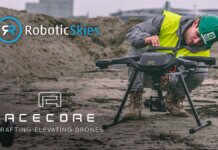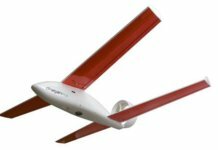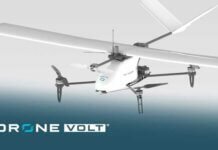Santa Monica, Calif.-based FlightWave Aerospace Systems Inc. has announced its second unmanned aircraft system (UAS) offering, the hydrogen-powered Jupiter-H2.
The hydrogen fuel cell technology, which stems from a partnership with U.K.-based Intelligent Energy, gives the Jupiter-H2 heavy-lifting capability and greater endurance, explains FlightWave.
The Jupiter-H2 UAS uses a narrow-profile, 70-centimeter airframe with a high-thrust power plant consisting of eight motors driving cross-flowing fan blades. A three-liter hydrogen tank fuels nearly two hours of continuous flight and lifts up to almost three pounds of payload, the company says.
“We view the Jupiter-H2 as a game-changing vehicle,” says FlightWave’s chief marketing officer, Edmund Cronin. “It’s particularly well suited to use cases requiring both long flight time and stable maneuverability in narrow indoor or outdoor spaces – for example, in a very large but cramped warehouse.”
Notably, according to FlightWave, because fuel cells have no moving parts, they are virtually silent and pollution-free; they emit only a tiny amount of water vapor. In addition, the company says refueling takes minutes, rather than hours, as a battery would require.
“Our partnership with Intelligent Energy has been a key element of the Jupiter-H2’s development,” adds Cronin. “They are pushing the limits of hydrogen fuel cell technology, making the fuel cell lighter yet more powerful.”
The drone’s approximately two hours of flight time varies with the payload, which can be a maximum of 1,250 g (2.75 lbs), enabling the simultaneous use of multiple sensors and cameras via a universal mount. Subsystems can draw power directly from the fuel cell, thus avoiding the need for those systems to carry their own batteries – in turn, reducing overall weight.










